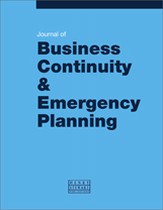Developing measurement indices to enhance protection and resilience of critical infrastructure and key resources
Abstract
The US Department of Homeland Security (DHS) is developing indices to better assist in the risk management of critical infrastructures. The first of these indices is the Protective Measures Index — a quantitative index that measures overall protection across component categories: physical security, security management, security force, information sharing, protective measures and dependencies. The Protective Measures Index, which can also be recalculated as the Vulnerability Index, is a way to compare differing protective measures (eg fence versus security training). The second of these indices is the Resilience Index, which assesses a site’s resilience and consists of three primary components: robustness, resourcefulness and recovery. The third index is the Criticality Index, which assesses the importance of a facility. The Criticality Index includes economic, human, governance and mass evacuation impacts. The Protective Measures Index, Resilience Index and Criticality Index are being developed as part of the Enhanced Critical Infrastructure Protection initiative that DHS protective security advisers implement across the nation at critical facilities. This paper describes two core themes: determination of the vulnerability, resilience and criticality of a facility and comparison of the indices at different facilities.
The full article is available to subscribers to the journal.
Author's Biography
Michael Norman is the Division Director for the Infrastructure Information Collection Division in the Department of Homeland Security’s Office of Infrastructure Protection. His responsibilities include physical and cyber security, resilience and the dependencies of the most critical infrastructure in the USA.
Citation
Fisher, Ronald E. and Norman, Michael (2010, July 1). Developing measurement indices to enhance protection and resilience of critical infrastructure and key resources. In the Journal of Business Continuity & Emergency Planning, Volume 4, Issue 3. https://doi.org/10.69554/OBLQ8823.Publications LLP
